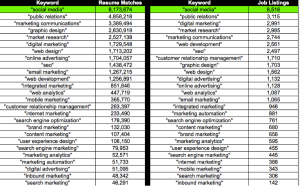— March 21, 2018

You are your brand, and you must do all you can to protect it and ensure that anything you share communicates your values and those of your organization. In the age of social media, this also means being acutely aware of the damage your brand can sustain at any given time.
Protecting your brand requires implementing social media policies and approval processes, as well as having the right personnel and tools to monitor conversations about your brand online.
With these systems in place, you can be proactive in responding to security issues as well as what is being said about your brand, good or bad, at all times.
First Things First: What’s The Threat?
Attacks on social media are getting more sophisticated and diversified, according to Proofpoint’s 2017 Quarterly Threat Report. If your organization experiences a security breach, the perception customers have about your brand will erode. This will also translate into revenue loss as customers will become weary of doing business with you and you may need to spend more money trying to control and repair any damage.
Depending on the size of your business, the damage caused by a hack or data leak on social media can result in closing your business within six months after an attack.
But it is not all doom and gloom; you can take measures to protect your brand on social media and make it a place where you can thrive and your customers can trust you.
Here are a few key tactics that will help protect your brand.
1. Put Social Media Policies in Place
When you create social media policies for your brand, you are in effect increasing the level of awareness of your employees and holding everyone in your organization accountable for their actions. This accountability has to be driven by best practices and strict governance across the board because human error is one of the biggest causes of social media security breakdowns.
Features to consider for your brand’s social media policy include:
- Establishing who on the team the policy is intended for
- Setting rules and regulations on who can post and when
- Creating security protocols
- Detailing consequences for misuse
- Creating a plan for consistency across all channels
- Scheduling any updates to the policy as needed
The size of your organization along with social media and online presence will dictate the number of features and how granular you need to be with your policy.
2. Define Approval Processes
Having an approval process in place dramatically cuts down the time it takes to review and approve social media posts. No matter how many people are involved in the process, establishing clear and robust parameters will result in timely posts.
The key is knowing how long it takes for your team, whether in-house or out, to deliver on posts across the different channels you manage.
To define your social media approval process, you must also consider how long it will take your team to finalize and approve media assets, such as GIFs, graphics, images, videos, or other types of content, in addition to the post copy.
Next, you can record the times to figure out how far in advance you need to talk to the individuals responsible for the content and transfer the data into an approval process.
An example approval process could go something like this:
- Write social media post copy – 1 day
- Create any graphics or images – 5 days
- Internal team approves content – 1-2 days
- Marketing Manager approves content – 1-2 days
- Sent content to the client for approval – 1-3 days
- Content is approved & scheduled or published
The days and people approving each step will vary according to your organization, and it can take a long time. Therefore, you should also have an expedited approval process system in place when you need to post something quickly.
The point is to be flexible on the regular and expedited processes. Don’t be caught off guard, always have contingency measures in place.
3. Always Monitor Your Social Media Channels
Expertly monitoring social media channels is a full-time job. This is because it requires keeping track of what is being said about your brand and your competitors, analyzing the data, and coming up with actionable insights to deliver real-world results.
Hiring someone in-house may not be possible for many organizations, but today’s freelance workforce provides viable alternatives. If these are not options, there are products and services in the marketplace you can use to keep track of what is being said on your social media.
Monitoring your social media is critically important to reinforce the policies and approval processes you put in place. When there is a mention of your brand, good or bad, you can react quickly to fan the flames in the right direction.
It is a given that your team will be on social media on behalf of your company or for personal reasons. By setting up policies, approval processes, and having the right personnel and tools to monitor conversations, you will be sure they follow your guidance with a code of conduct and set of standards to protect your brand whenever they interact with anyone on social media.
This post originally appeared on blog.gainapp.com.
Digital & Social Articles on Business 2 Community
(79)





